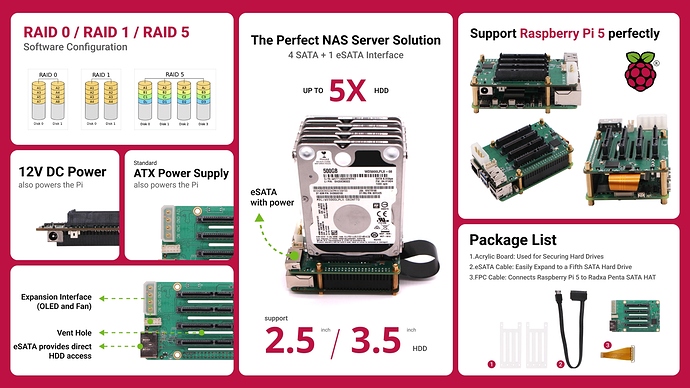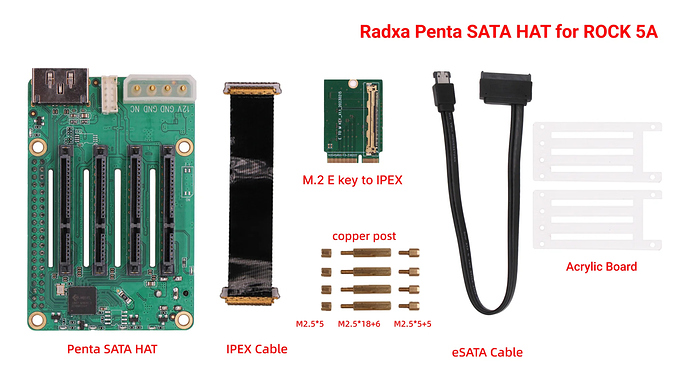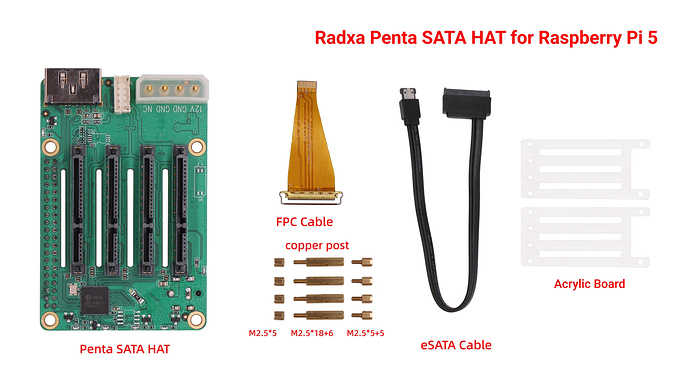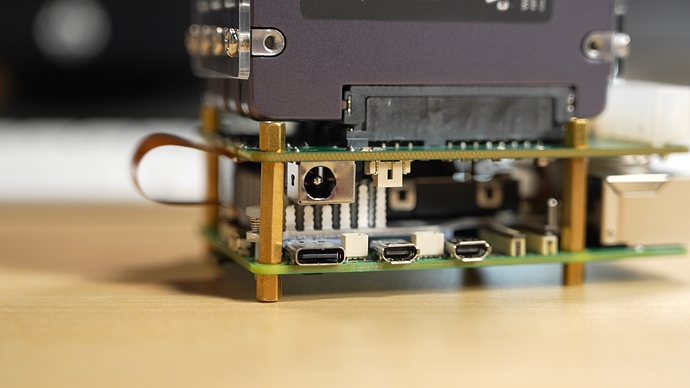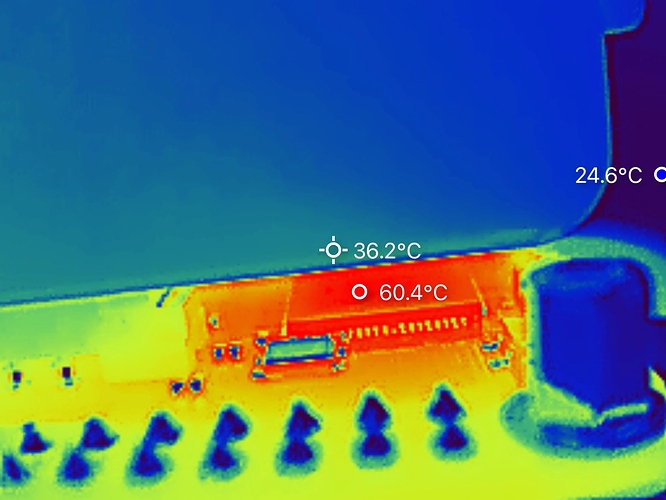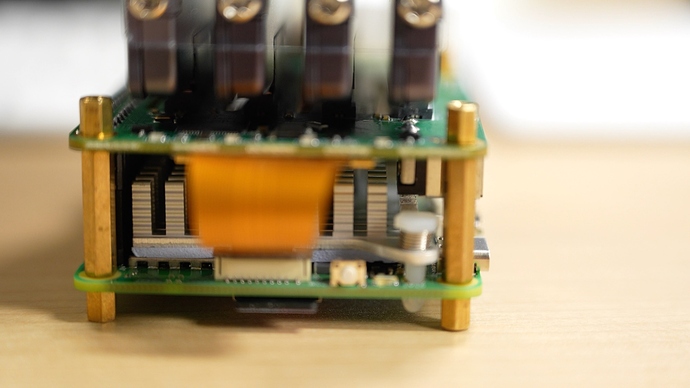We are glad to announce that the new Penta SATA HAT is available.
The Radxa Penta SATA HAT is an addon HAT designed for Pi form factor SBC with PCIe buses. It utilizes the high-speed PCIe and provides a small form factor NAS solution up to 5x disks. It has the following features:
- Up to 5x HDD/SSD, support 2.5inch or 3.5inch SSD, up to 100T Storage
- 4x SATA + 1x eSATA with power
- Utilize up to two lanes PCIe 3.0 buses on the SBC
- External standard ATX power supply support for HDD and Pi SBC
- 12V DC power input for 2.5/3.5 HDD power and Pi SBC
- Support HDD suspend mode
- Support software RAID 0/1/5
- Optional PWM control fan for HDD heat dispatching
- Optional OLED display for IP/Storage info
Models and Pi Supports
- RA006TE: SBC with top side E Key: ROCK 5A
- RA006TM: SBC with top side M Key: ROCK 3C
- RA006BM: SBC with bottom side M Key: ROCK 4A/4B/4A+/4B+/4SE/3A
- RA006FFC: SBC with FFC PCIe connector: Raspberry Pi 5 / ROCK 5C
Availability:
Arace: https://arace.tech/products/radxa-penta-sata-hat-up-to-5x-sata-disks-hat-for-raspberry-pi-5
